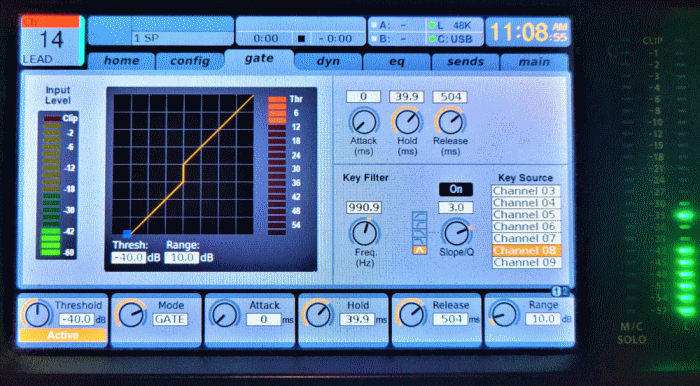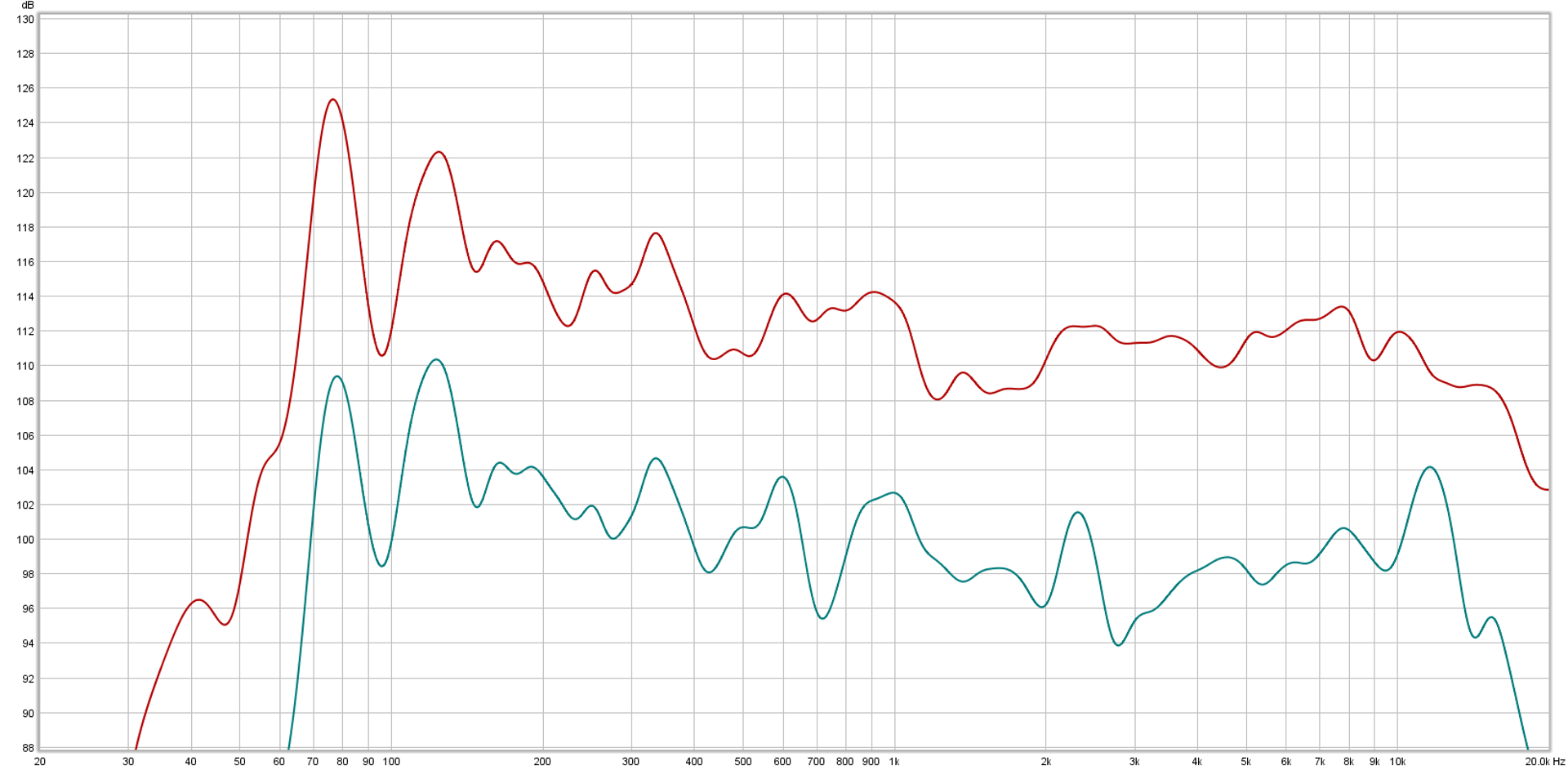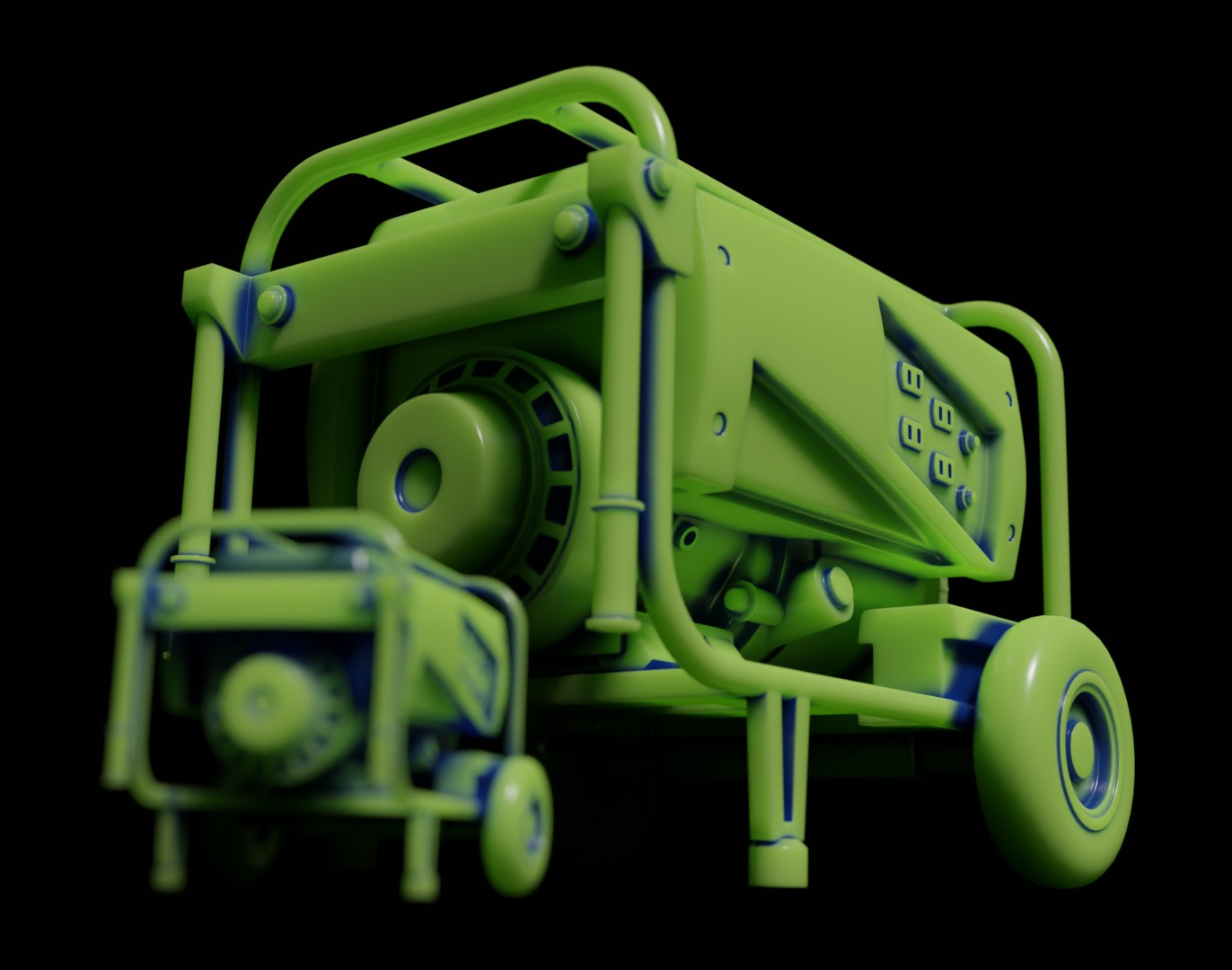The drum overhead actually became useful for a change.
So, there I was.
The classic situation was unfolding. A loud-ish (not insanely, just loud-ish) rock band is playing in a club. A club that was brand new. A club that they could have built any way they wanted, and apparently, what they wanted was a splatterfest-inducing set of hard surfaces, and a load-in that was all stairs.
Geeze, lou-FREAKING-weeze. Guys, you could have had anything, and THIS is what you ended up with?
But, yeah, the classic situation.
The main vocal is running at high gain to get some semblance of intelligibility, and it IS working out in general. Of course, between songs, it's either duck the fader or get that little ring of feedback trying to poke through. I was tired of ducking the fader. Not that such a thing is so strenuous, but weren't machines supposed to save us from boring repetition? I think so.
I knew what I wanted my console to do. When it was quiet on stage, I desired that the fader on the main vocal to come down a bit. When the band kicked into gear, that level should go back up to where it had originated.
"A gate can do all those things!" I thought to myself. But how to determine when the players had come to a stop between songs? Ah...yes! The drum overhead! The drum overhead, useless to me in this room as a sound reinforcement device, had suddenly gained utility. It was a perfectly adequate sensor of the band being loud or quiet.
So, there you go. I set the main vocal's key source to the overhead, tweaked my threshold, attack, and release, and initially set the range to yank the lead vocal level down 10dB when the gate was engaged. (I might have changed that to 6dB later).
All relatively easy, if your console has the tools in the toolbox, and you know what you want those tools to do.










